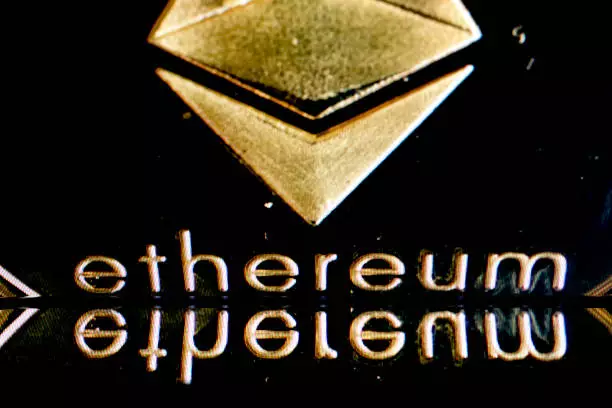The cryptocurrency market is notorious for its volatility, and while this can induce panic among investors, it often paves the way for opportunity. Recent fluctuations in Ethereum’s price, particularly its descent to approximately $2,100, have sparked widespread concern across the crypto community. Yet, what appears as a setback could serve as a catalyst for an impending rebound. With prominent analysts forecasting a strong recovery, the question remains: will Ethereum deliver on its promise as a transformative financial asset, or is the worst still to come?
Recent Price Movements and Market Sentiment
The recent dip experienced by Ethereum has reverberated throughout the entire crypto market, with Bitcoin briefly dipping below the symbolic $100,000 mark. This multi-faceted correction raises alarm bells for many, but underlying sentiment shows a distinct divide between fear and opportunity. Analysts are not merely observing the market; they are making informed forecasts based on established trading theories that suggest a strong Ethereum rally could emerge. The power of price cyclicality, momentum, and technical analysis cannot be understated in these turbulent times.
The Elliott Wave Perspective: Opportunity Knocking?
One of the most intriguing analyses comes from @CryptoWaveV, who employs Elliott Wave Theory to plot out potential market movements. His assessment indicates that Ethereum has completed a wave A decline—a sign that the next movements, specifically a wave B retracement, could see prices bounce up to the $2,792 range. A brief surge could lure investors back in, but don’t let that fool you; a subsequent wave C could drag prices down further, potentially reaching the $1,706 mark. While that puts short-term investors on high alert, it opens an ideal “buy zone” for strategists with a longer outlook.
This analysis, grounded in historical patterns and measured responses to market behaviors, emphasizes that volatility is not merely chaos; it can be embraced as a tool for establishing future gains. The perceived downturn serves a purpose in clearing out weak positions, allowing more fortified investors to capitalize on upcoming gains without the weight of unreliable capital.
The Wyckoff Method: A Blueprint for Recovery?
Contrasting with the Elliott Wave theory is the perspective offered by analyst Merlijn, who applies the Wyckoff method. His analysis posits that Ethereum is transitioning from the spring and test phases of accumulation, preparing for what he refers to as the markup phase. According to Wyckoff’s principles, the recent price drop was not simply a setback but a calculated maneuver to eliminate weaker hands from the market.
Merlijn’s projections suggest Ethereum could consolidate around a trading range of $2,150 to $2,450, ultimately breaking through significant resistance levels before potentially reaching the $6,800 to $7,000 range in the upcoming six months to one year. This sustained upward trajectory paints a more optimistic picture for Ethereum’s future, indicating that the current price corrections are structural necessities, not mere failures.
Informed Optimism: Analyzing the Convergence of Predictions
Analyses from both CryptoWaveV and Merlijn converge on a bullish outlook for Ethereum, despite the looming danger of short-term volatility. The potential for Ethereum to reach the $6,000 mark, especially following such corrective movements, illustrates a collective belief in its long-term viability. Market cycles can be disruptive, yet they serve as fantastic opportunity terrains for astute investors willing to navigate the chaos.
In this light, savvy investors must keep an eye on both macroeconomic indicators and technical patterns, meticulously evaluating each shift. The dynamic cryptocurrency environment calls for acute sensibility; the game is as much about timing and resistance levels as it is about faith in the technology itself.
As the market debates the validity of bullish projections in light of recent downturns, it becomes increasingly clear that Ethereum stands on the precipice of a significant renaissance. This isn’t just another asset; it’s potentially the keystone in the future of decentralized finance. The road ahead may be fraught with uncertainty, but for those prepared to act, it may well reward the bold.

